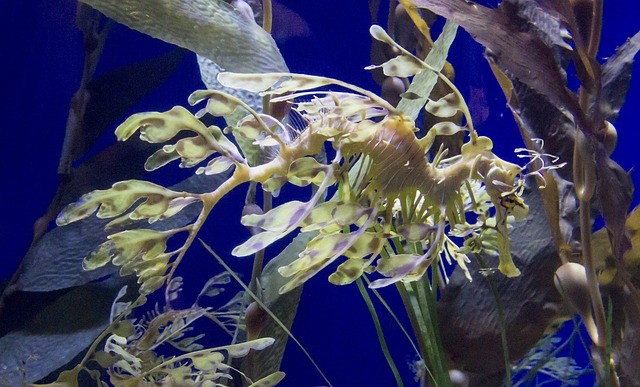
Strange sea dragons or wispy sea dragons with their leaf extension from their bodies are because of jumping genes they possess. Due to its influence, an aquatic creature is adapted to live among the seaweeds and swaying in the sea.
Look a lot closer, and there will be interesting features like missing teeth, missing ribs, and oddly kinked and curved spines.
Is their genome a mess or evolution?
Researchers studying these creatures have found out why they look like that. In their genomes, repeating DNA segments drive adaptation, but the gene for giving rise to teeth, nerves, and even facial features is not present, reported Science Alert.
The team studying them remarked in a new paper about them; it explains why their genomes are like that.
It says finding out how these animals evolved with such traits with facts about this unusual vertebrate family, the Syngnathidae.
These sea creatures come from the same family as the pipe fish and the sea horse calls the Syngnathidae, with the distinction of males capable of becoming pregnant, citing Nation World News.
According to evolutionary genomics researcher Clayton Small from the University of Oregon, co-leader of the study about this specific animal. He said that this species is cool for many old reasons.
These strange sea dragon relatives of sea horses are already weird among oddball fish that have transposons in their genome.
What did they find out about its genome?
The leafy sea dragon and the weedy or common sea dragon, both of which are found in cool waters off the southernmost coasts of Australia, were the two sea dragon species whose genomes were sequenced by the team.
These slender fish can be challenging to spot as they drift through kelp-covered rocky reefs while concealing themselves with leaf-like fronds.
Considered elusive, the only member of this odd group of fishes not seen is the rare ruby sea dragon which was not obtained yet for gene sequencing, it was seen only in 2017 for the first time!
All members of this group are sought after for their bizarre forms, though the ruby sea dragon appears to have lost the leafy appendages displayed by the others, with evolution removing the extravagant frills.
Scientists believe sea dragons' extravagant features evolved relatively quickly, within the last 50 million years or so, after they and sea horses split off to form a new family.
To analyze the samples from sea dragons raised in captivity, the researchers from the University of Oregon collaborated with specialists from the Tennessee Aquarium and the Birch Aquarium at Scripps Institution of Oceanography.
It soon turned out that sea dragons have a remarkably large number of transposons in their genetic sequence when contrasted to their closest relatives, pipefish and seahorses.
The transposons are jumping all over the DNA that creating adaptations fast, that is why these sea dragons are so unusual.
More research will be required to fully understand the evolutionary history of sea dragons and their relatives, despite the researchers' inclination to hypothesize that the loss of these genes may have contributed to the development of sea dragons' elongated facial features extravagant frills.
According to Bassham, we could see that the leafy paddles' supports resembled elaborate spines with fleshy appendages added to the ends.
Strange sea dragons with jumping genes produce weird-looking animals, but more might be hidden in their unusual genome.
Related Article: Explosion of Dying Stars Create Voids in the Interstellar Gas of the Milky Way Galaxy, Researchers Claim
© 2025 HNGN, All rights reserved. Do not reproduce without permission.








